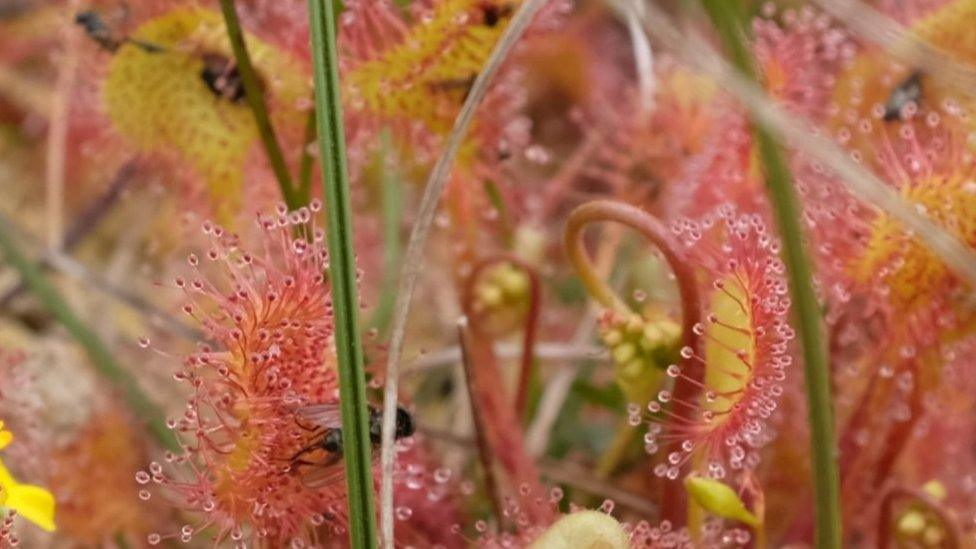Fly-eating plants reintroduced to Lancashire nature reserve
- Published
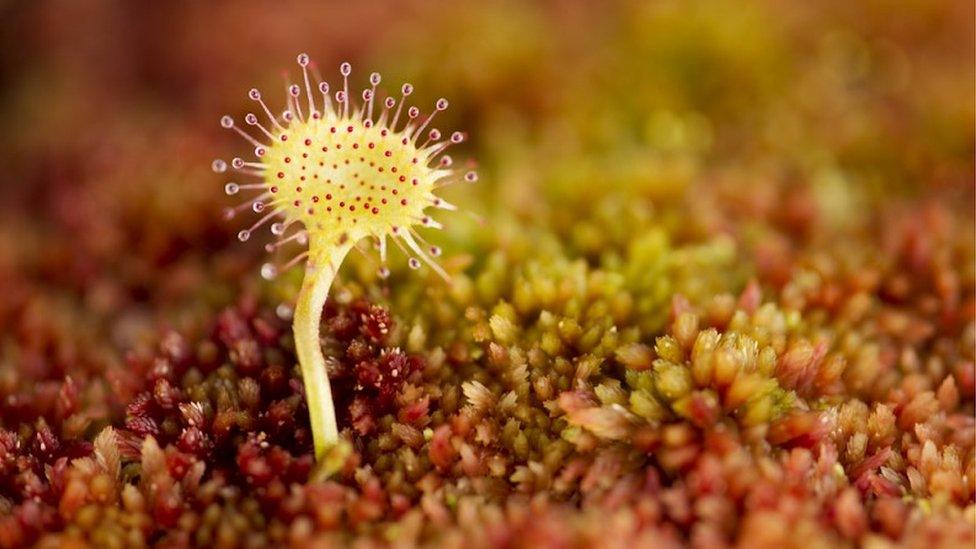
The greater sundew plant is now thriving at the Lancashire peatland
Insect-eating plants are among the 17,000 species which have been reintroduced to a Lancashire nature reserve.
Lancashire Wildlife Trust has returned the plants to Winmarleigh Moss, as it works to restore the Garstang peat bog after years of peat extraction.
It hopes to create a haven for rare wildlife and an invaluable carbon store to help climate change.
Plants including the greater sundew and bog asphodel are now thriving there.
Project officer Helen Earnshaw said: "It is exciting to see bog asphodel, white beak sedge, greater sundew and oblong-leaved sundew back on Winmarleigh Moss, as they have been absent for 100 years.
"These plants are only found on peatlands, and it is important that we do all we can to ensure that they establish and thrive here to add to the biodiversity of the site".
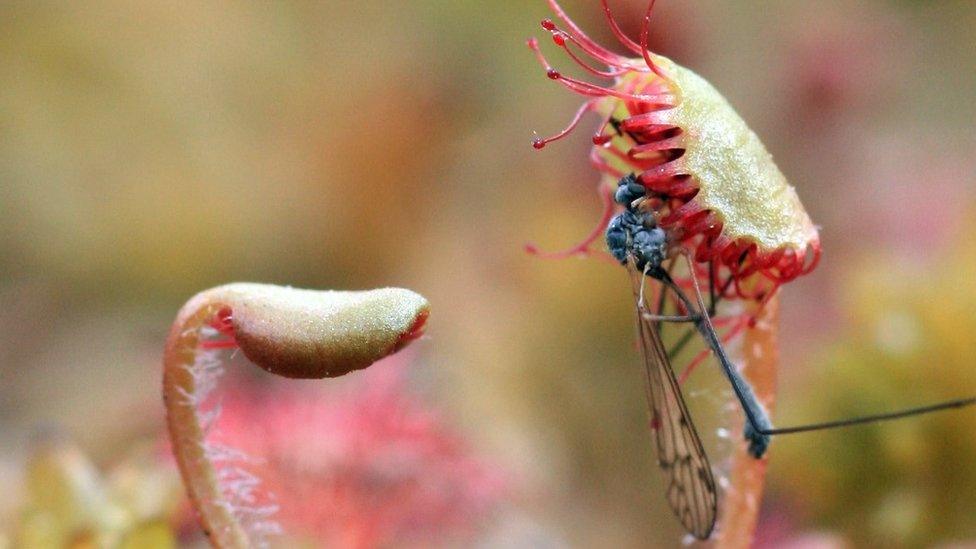
Sundew have been absent from the site for 100 years, Lancashire Wildlife Trust said
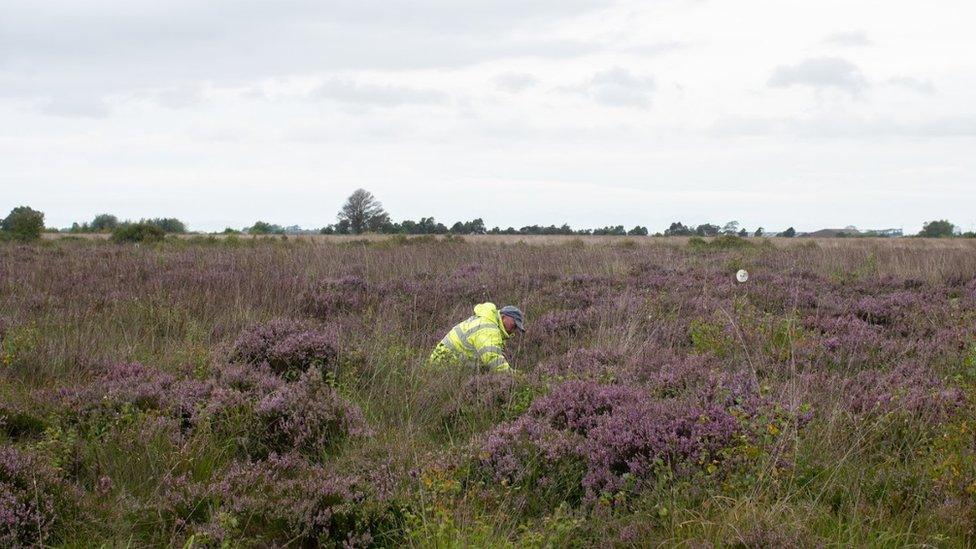
Specialist contractors have carried out the planting at the nature reserve
The trust said bringing these lost plants back is vital to support the varied biodiversity of this rare fragment of lowland peatland.
It was damaged by historic drainage, done so that the land could be managed for game bird shooting, but which meant many plants eventually died out.
The project has been funded by £30,000 from the Lancashire Environment Fund, Whitecroft Lighting and Natural England.
Carnivorous plants to be reintroduced include the greater sundew, round-leaved sundew and oblong-leaved sundew, which are rare fly-catchers.
White beak sedge is also now thriving there, which has delicate white flowers in early summer which provide a vital nectar source for the locally rare population of large heath butterflies.
Winmarleigh's butterflies have already served as an important donor population for the successful reintroduction of the species into Greater Manchester, where they had become locally extinct.
The nature reserve is surrounded by various other peatlands (Gull Moss, Cockerham Moss and Birch House Farm) which are currently undergoing restoration, and it is hoped the new plants will naturally spread to these areas.
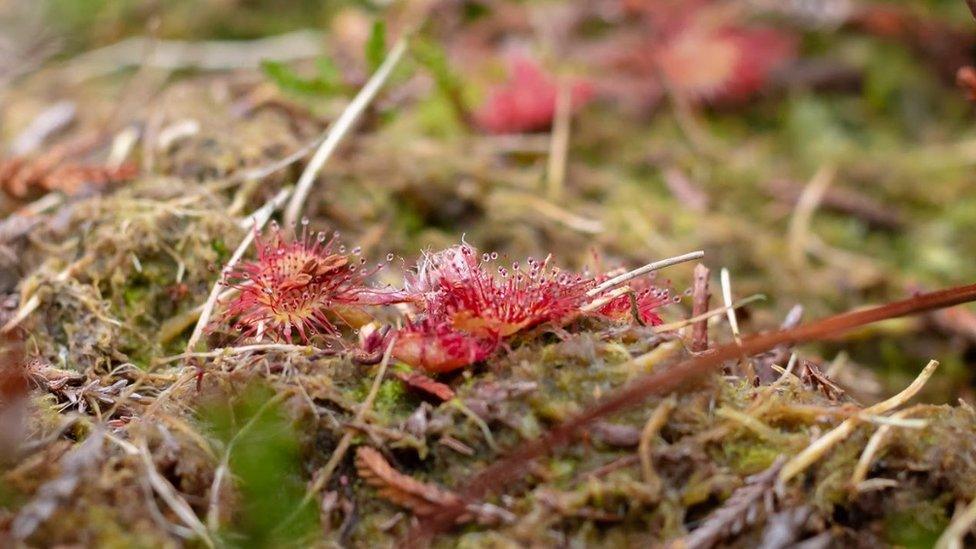
Round-leaved sundew is a rare, fly-catching plant
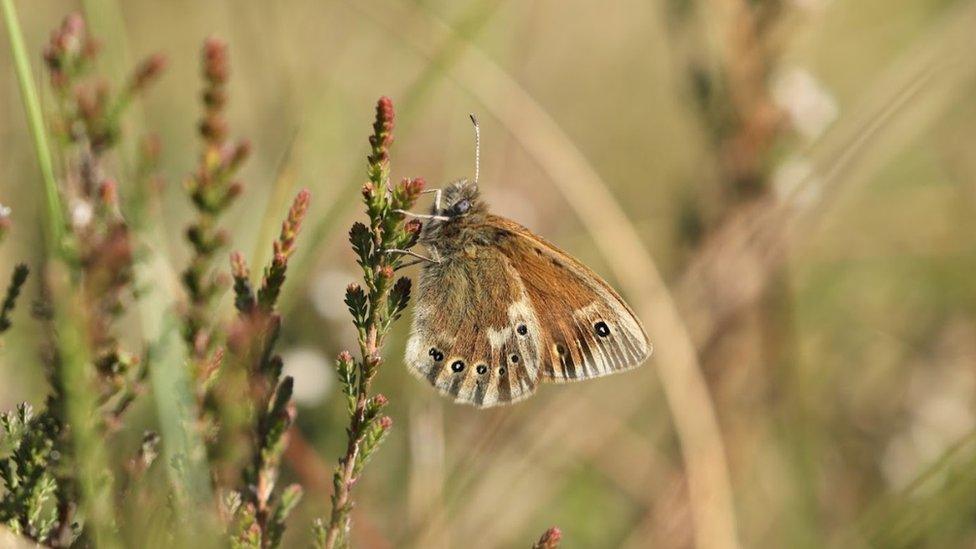
White beak sedge has been planted which attracts the large heath butterfly

Why not follow BBC North West on Facebook, external, Twitter, external and Instagram, external? You can also send story ideas to northwest.newsonline@bbc.co.uk, external
- Published14 November 2022
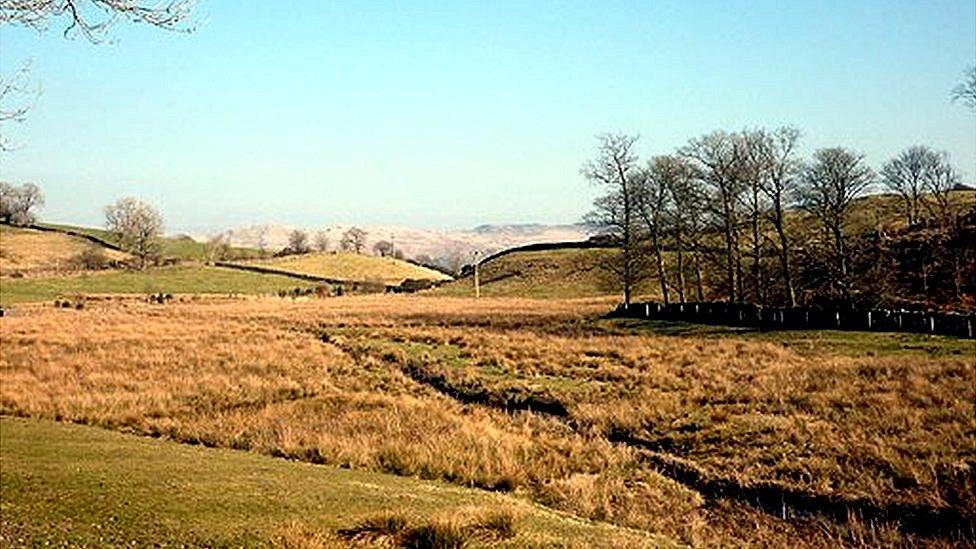
- Published1 September 2022
